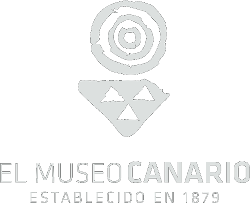Collections of archaeology of Gran Canaria

Inventory: 3.31
3Object: Rotary hand millPrem
eal lithicization: Pulimented lithic industryM
atter: TobaD
imensions: Diameter max. 25.7 cm.; Total height, 1
8 cm. Cultural context: Prehistory of Gra
n CanariaDescription: Composed of two circular pieces crossed in its central area by a hole that protrudes in the upper piece by a neck called gollete. Wear zones on contact surfaces, or active, of both elements stand out. It also has two dimples or depressions on the outer face of the upper tooth. The support on which the mill is made is tuff, cemented volcanic ash, whose nature, not very hard, and texture, irregular, favor the extraction in the quarries and the configuration of this type of artifacts, as well as the grinding function for which they are intende
d. Use/function: Domestic instrument intended for grinding. The principle by which the rotary mill is governed is that of friction: the lower part remains fixed and the upper moving, rotating on an axis. The hole is used to insert a wooden stem or bar that immobilizes the sleeping tooth, fixed it to the ground, and guides the rotational movement of the dynamics. The gollete introduces the grinding grains that are reduced to dust or flour by friction between the two teeth once the upper grinding wheel begins to rotate. Depressions on the outer faces of the upper element allow a wooden rod to fit to fix it and facilitate movement. The rotating mills were made on vacuolar basalt or tuff, both volcanic rocks. In the case of the latter this matter tends to be disintented and mixed with the food that is being transformed, a fact that is evident in the pre-Hispanic population of Gran Canaria through the tooth w
ear. Origin: Gáldar, Gran Cana
riaEntery form: Acquisition
Source of entry: The Canarian Mu
seumDate of entry: February 11, 1892
-ERR:REF-NOT-FOUND-go back to the gallery

